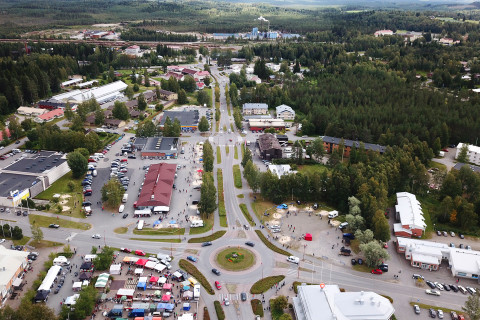This research focuses upon the uneven development of different regions that has led to a trend where population growth only occurs in a few urban regions. More than two thirds of the municipalities in continental Finland are losing population. Managing this differentiating trend requires a new kind of approach, smart shrinking, where the development potential of regions and municipalities is recognised and allocated to promoting adaptation.
The University of Eastern Finland’s Spatia – Centre for Regional Research will implement the What does smart shrinking mean in Finland? research together with Norrum Oy and an international research group. The research is funded by the government’s analysis, assessment and research activities (VN TEAS).
There are complex financial and well-being related factors behind this decrease in population. They are entwined together in complex ways and may lead to a self-perpetuating circle of shrinking. The shrinking process includes structural factors such as decreasing employment in agriculture and industry, exacerbated by location-related impacts of poor accessibility, sparse population density and border effects. Globalisation and the unbalanced development of the regions’ economy also play a part.
It is vital that regions and municipalities with a decreasing and aging population are able to find new solutions to secure employment, business operations, services and well-being. Both the national and European Union’s development policies offer measures to which we can apply the smart shrinking perspective, which is based on researched data, a proactive approach and renewal.
An example of this is the goal of sustainable, low-carbon development, which by now permeates all sectors of politics and administrative levels.
Smart shrinking may necessitate reinforcement of administrative structures and the social capital of local communities, maintaining well-being as resources decrease, without necessarily increasing population numbers.
“Instilling the smart shrinking approach, highlighting proactivity and renewal, into Finnish society and decision-making is possible. An example of instilling a new way of thinking is the prioritisation of sustainable, low-carbon development which now permeates all sectors of politics and all administrative levels,” says Research Director Petri Kahila from Spatia – Centre for Regional Research.
The differentiation of regions and municipalities and the need for smart shrinking do not apply to Finland alone, but also to Europe as a whole. The research will create a snapshot of managing change in Finnish regions and municipalities with a decreasing and aging population and the new opportunities available to them. Applications of smart shrinking approaches are reviewed on a local, regional and national level, because developing a regionally balanced approach requires unanimity about the prerequisites of smart shrinking, and interpretations of the current situation on all decision-making levels. An international review of policies related to regional differentiation, equity and social exclusion in the Netherlands, Sweden and Scotland will also be carried out in the research.
Further information:
Research Director Petri Kahila, University of Eastern Finland, Spatia – Centre for Regional Research, e-mail [email protected], tel. +358 (0)50 411 8445


